When you need more than a little help from your friends, seek out a coach
I’m not sure when or why I started thinking about the business of art coaching, though I was a guest for one of Paul Klein’s webinars more than a year ago. After I mastered Instagram this spring, I started seeing occasional ads for art coaching. And then I noticed a three-hour writing-for-artists workshop at our little local museum (and thought, harrumph! Do you really believe you can teach someone to write an artist statement for an exhibition, a biographical statement, a grant proposal, and content for a website in three hours? Why not throw in a concise summary of War and Peace?)
When I started investigating, I discovered at least ten individuals who purport to offer art coaching in varying formats: webinars, do-it-yourself workshops, or one-on-one counseling, and for varying fees, generally in the low three figures up to a few thousand dollars. So I will be tackling the subject in at least two parts, the first presented herewith, with some other suggestions for finding coaches at the end.
Of course, I like to think that I cover some of this material for free (or by the good graces of your support as members)—topics like how to fix your website, work with dealers, negotiate a contract, cultivate your collectors, make the most of social media, and so on. But I also concede that there are artists who benefit hugely from group participation, individual problem-solving sessions, worksheet assignments, and having their feet held to the fire on a regular basis. A certain amount of networking opportunities also arise from group endeavors. (I’m hoping to foment a little Vasari21 networking in the future in select areas—I call these “parties.”)
The tough part may be deciding what it is that you need: Are you looking for a community of like-minded souls? Help with writing skills? Encouragement to get your work out there? Information on running your studio like a business? Here’s part one of what kind of coaching is available for artists (with comments on each from past participants who are Vasari21 members). My best advice is to study the websites carefully, check out the art of other participants, ask questions of the coaches, and be prepared to make a commitment—because refunds may be hard to come by.
Crista Cloutier’s original ambitions were to be a photographer and art historian (she has a master’s in religious studies), but she ended up instead
working with the Segura Publishing Company in Tiempe, AZ, a fine-arts press that offers original prints under the direction of a Tamarind-trained master printer. “I started out as a part-time assistant, and within a year was directing the whole company,” she says. “My job was to sell the work. I traveled every month, finding corporate and private collectors. I was also writing and curating, and I made some documentary films about art. But I could feel a part of me was dying. I wasn’t making, I wasn’t creating.”
After about a decade, Cloutier gave it up and moved to France to rethink her life and career. “It took me a while to see the value of my experiences at Segura,” she says. A friend suggested she put together a practicum for artists, and her first venture was a ten-hour workshop she conducted all over the world, traveling to England, South Africa, Italy and France. But, she says, “I couldn’t make it affordable for artists and make a living from it.” So three years ago she launched a seven-week online class called The Working Artist. Each video is about 30 minutes long, and the course covers basic topics like writing bios and artist statements, putting together a business plan, online marketing, finding an audience, “the truth about art dealers,” contract negotiations, and the like.
Every four weeks she holds an “interactive coaching class, in which any student can call in and from the controls, I can see who has raised their virtual hand with a question,” she says. “Then I unmute them and everyone can listen to our discussion. If someone can’t be on the call, they can email me questions which I then read aloud and answer. The calls are recorded and available on the website. The coaching call lasts as long as it takes—sometimes 30 minutes, sometimes over two hours!”
Cloutier adds that she occasionally surprises her alumni with free pop-up coaching calls, so she “can continue to support them.”
There’s no homework per se, but there is “an interactive workbook, so participants do the work as they watch the video. To get to the next video, they must pass a short quiz,” she adds.
The seven-week course costs $399 and students must take the entire course and show Cloutier their completed workbooks before she will consider offering refunds. “The reason I do that is because I know that if they do the work, they will get results. And that’s my main focus—results.”
Cloutier also offers an additional 90-minute one-on-one coaching session for $300. “I will rarely work with artists who haven’t completed the course because we end up repeating information that they would have gotten,” she adds. “By taking the class first, we speak the same language and we can really hit the ground running.”
What sets her apart, she believes, is the breadth of her experience. “I had a gallery and was also selling to galleries. I sold work to major museum collections and designers. I’ve worked as an art appraiser and I’ve curated internationally. The ‘Working Artist’ made sense to me as an artist. And by building an audience, I now have book publishers coming to me.”
Participants’ Feedback:
Karen Jilly: “I begrudgingly took her class and soon discovered that it was truly shocking how many business skills I was lacking. I also discovered that many of my problems were mostly fear driven. She really held my hand until I could learn to speak in full sentences about my work.
“Obviously, for any artist who has been working long enough in the field, there are items in her class that may not be applicable, particularly if they pertain to novices,” Jilly continues, “but those that were applicable helped me tremendously. I that know she tries to bend over backwards for every single person, with perks such as free coaching calls.”
Jilly also credits Cloutier with pushing her back to work after a hiatus of several years. “Crista’s teachings helped me rediscover my artistic voice and how to re-examine my entire body of work,” she says in an interview on Cloutier’s website. “Her methods have a way of cutting through to pinpoint your stumbling blocks. She helped me uncover what I was really trying to say with my art at a time when I felt like I had forgotten how to even speak about my work.”
Barbara Kemp Cowlin: “For people who find courses on the Internet helpful and are beginning artists, The Working Artist could be a good fit,” says Cowlin. “Crista Cloutier offers a wealth of basic information that will help artists who need to learn about the business of art from scratch. For artists who’ve been in the game a long time, I would like to see Crista develop an advanced-level class.”
Jeannie Motherwell: “I took her online master class and found her full of compassion and very encouraging. I had been represented by a gallery for more than ten years when it suddenly closed. I was working at Boston University, getting ready to retire to pursue painting full time when I discovered that the rules for a working artist seemed to be changing. I didn’t know enough about the marketing skills I would need if I was affiliated with a gallery or not. And Crista was instrumental in encouraging me to use my background in positive way.” The daughter and stepdaughter of art-world giants Robert Motherwell and Helen Frankenthaler, Jeannie Motherwell had always been reluctant to divulge her personal history for fear it would skewer judgments of her work. “Crista helped me shift my perception by explaining that the truth was an asset; that it’s part of my own history, part of who I am and what I do today.” Motherwell says on “The Working Artist” website.
For more than two decades, Paul Klein operated galleries in Chicago, most recently in the West Loop. Over the years, Klein Art Works shifted its focus from highly marketable abstract work to cutting-edge, new-media shows, and the dealer came to embody, in the words of one reporter, both “the successful merchant and the misunderstood visionary.”
Klein Artist Works is now the name of the coaching service he offers via 10 online webinars and separate one-on-one consultations. “A lot of coaches give you the steps to do something—here are four steps to get a gallery, five steps to writing a bio or artist statement,” he says. “I feel what I do is closer to therapy with art as a vocabulary. To be an artist encompasses your whole life. I don’t distinguish the art hat; I’m coaching the whole human being.” The webinars, he adds, are to “help people get out of their own way—to have a pulse they can check and keep them steady.”
Projected on your computer via a segmented screen, the webinars generally include about 25 to 40 participants and a guest expert from the art world to field questions at the end of the sessions. (I’ve been a participant, and though now I’m a bit fuzzy on the details, I recall it as being a lot of fun—Paul was an engaging and thoughtful mediator—even if the participants often had to be coaxed into asking questions.)
Topics each week are wide-ranging and free-wheeling, such as: “The Artist’s Life: What Do I Do?” “Art Galleries, Foe or Friend?” “Making the Art: You and Your Soul,” and “The Support System: How To Get Attention.” The roster of guests is impressive: Eric Fischl, Nick Cave, Mark Kostabi, Jerry Saltz, Dave Hickey, Tania Bruguera, Dan Cameron, and others. Each webinar is about 60 to 90 minutes, and there’s an introductory webinar, which is free. The package costs $1000 and includes access to all recordings, past, present and future. You can also listen to a few webinars to get a sense if this is right for you, or pay $800 for access to all webinars on his site. There are no written assignments or workbooks.
“The course is live. Everyone gets to talk, meet others, grow community, engage offline, and act like real, live, loving humans” Klein says. “And it is organic and unscripted. I know that next Monday, for instance, we will talk about gallery relationships, but that’s it. Everything is shaped by what needs to be conveyed and the input, needs, and desires of those in attendance.”
Klein also offers individual one-on-one coaching, with a face-to-face discussion before an artist signs up. As one of his successes in this area, he cites Jorge Mañes Rubio, a 2010 graduate of the Royal College of Art in London and a 2014 TED fellow. At the moment, Rubio is in South Korea, working on a project about shamanism. “Jorge’s art deals with the human spirit,” Klein says. “When we began working together, three years ago, he was photographing the interiors of vandalized, abandoned, historic, Italian cathedrals and churches. We meet every two weeks. That’s a pretty normal frequency.”
As a private coach, Klein charges $125 for half an hour, and meets with participants for an average of four to eight weeks. “We keep you on task and on track. It’s personal and personalized. I’ll advocate for you,” he writes on his website. “I come up with ideas,” he adds in our interview. “I talk to you as an artist and get to know what makes you tick. I push you to fulfill your potential beyond your arbitrary, self-imposed limits, and then show you how to get there. I believe that working with a coach on an ongoing basis can provide the constant push to significant accomplishment.”
“I don’t teach artists how to make money,” he emphasizes. “I teach them how to have a satisfying, successful life.”
Participants’ Feedback:
Mimi Chen Ting: “I loved the sense of community. As artists, we work alone but at a fixed time each week you have a group of colleagues that knows what it’s talking about. Paul is very upbeat and optimistic, and that’s what makes a difference. He doesn’t give you a blueprint and say, You do this, you do that. He emphasizes building relationships.
“I’m very introverted, and I learned that I’m not alone,” she continues. “Everyone has their insecurities. You accept those and move forward. I gained courage from taking part, and you learn that when things don’t turn out the way you want or people don’t respond, it’s no big deal. You move on. I have more confidence, and I’m now working with four different galleries in different places.”
Tracy Linder: “I was thinking of throwing some artwork in the car and heading to Seattle, a jaunt that would have cost me about $3000 for a week. Or I could take Paul’s webinars.” She chose the latter as way to establish new relationships. “I didn’t expect to learn anything new but what happened is that twelve of us—we’re now down to eight—meet every two weeks online and report a list of things we want to do, holding ourselves accountable to the tasks—such as, I’m going to reach out to a museum this week, or to so many galleries. We look at one another’s work online and talk about common problems we have, like getting your work back. We set some rules and make sure everyone has equal time.
“What was nice about the webinars is that we were brought together by that experience,” she adds. “Paul is completely good hearted and generous and remains a positive touchstone.”
Alyson Stanfield’s background is in museums as a curator and educator in Oklahoma and Kansas for ten years (she was also an assistant to a U.S. senator in Washington for two years before beginning graduate work in art history at the University of Texas in Austin). She moved to Denver just before 9/11 to start an art-consulting business, but switched gears when she realized she’d rather work with artists on developing their careers after they began to approach her for help. “I started one-one-one,” she says, “so the whole business began with an educational focus.” Calling the venture Art Biz Coach, she boasts that she hasn’t missed a weekly newsletter since March 2002; her online courses started in 2003.
The four courses Stanfield offers are a combination of webinar, videos, and self-instruction. Offered in seven-week segments throughout the year, each covers the basic aspects of approaching your art as a business: “Art Biz Accelerator” is about money and sales; “Magnetic You” covers your professional presentation; “Creative Content Camp” teaches you to take advantage of social media; and the “Fan Boosting Formula” coaches you in nurturing relationships in “a gentle and loving manner.” Each of these modules costs $347 per program, or you can sign on for all four for $1297, with staggered payment plans available along with additional coaching in between courses.
There is also an “Art Biz Lift-Off” course of self-study that goes for $197 and covers basic questions about marketing, business registration, accounts, licensing, and how to price your art. Stanfield’s website says this is about “understanding the commitment to your art and your art business as you become a professional.”
In addition, there is an Inner Circle, where artists can be part of an ongoing community, receive private one-on-one and group coaching, and go on retreats (fee on request). “People join because of the coaching and stay because of the community,” Stanfield says.
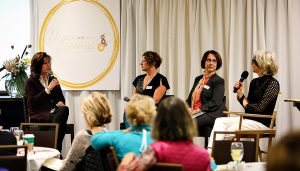
Stanfield, far right, leads a panel at an Art Biz Breakthrough gathering (photo: Regina-Marie Mountjoy)
At different points of the year, she hosts a three-day “Art Biz Breakthrough” event that offers “energy, inspiration, and lots of teaching” and “Big Table” art retreats, which have “no agenda,” she says. “I walk participants through a process, based on their goals, to help them create a three- to twelve-month plan.”
At any given time, there may be 40 to 70 students in one of the seven-week classes. “I teach by slides, so I have a whole presentation with examples and walk-throughs,” Stanfield says. “I get on livestream and answer questions, and students have worksheets every week, some of which are simpler than others.” As an example, she cites the week devoted to customer enrollment, or managing your collectors. “How do you treat them as they get on the list? What happens when they sign up for your mailing list on your website? How do you keep them interested in your art? It’s basic stuff, just good commonsense relationship building.”
If this sounds like an awesomely ambitious program, Stanfield does have a full-time assistant and four to six associate coaches, hired on a contract basis.
Participants’ Feedback:
Jeff Hirst: “Alyson caused me to be accountable and more focused in what I was doing. I’ve had more success in getting people to sign up for my workshops and encaustic classes, and in getting gallery representation in Chicago. I’m part of the Inner Circle, and we have an online meeting once a week to talk about different issues pertaining to art business. At the same time, you meet with coaches individually, and there’s a Facebook page where you can check in.
“I find the constant homework a little bit daunting. You have to do a forecast for each month, and check off what you’ve accomplished, but I’d rather have more to do than too little. I’m not sure if I couldn’t do much of this on my own, but the courses have given me more direction. And the accountability factor, having to check off tasks each month, has raised the bar.”
Marilyn Joyce took part in Stanfield’s Creative Content Camp, which gave her, she says, “a better foundation. That doesn’t mean I’m implementing everything right now, but taking the things I need to work on: subdividing contacts, refining Instagram accounts. I feel like I have a format that works for me, whereas before that, it was ‘Where do I start? How do I use social media so that I’m not overwhelmed by it?” I have more tools available to me.”
Joyce also did a retreat with Stanfield in Portland, OR, in September. “There were 20 people from all over the U.S. Everyone was a professional and in one way or another engaged in selling. Alyson had a format that we followed, and we broke down into small groups to work through more specific issues. We talked about sales and setting up structures to document and archive our artwork
“One of the big lessons for me was, ‘Don’t compare yourself with someone else,’” she continues. “Do what you can at the moment where you’re at and build on it. She’s good at helping you accept yourself where you are. I appreciated the level of honesty and integrity.”
Other Resources
For help with running her practice in a more businesslike way, Mary Zeran turned to SCORE, billed as “the nation’s largest network of volunteer, expert business mentors, with more than 10,000 volunteers in 300 chapters.” These are retired businesspeople from varying backgrounds who are happy to help you for no fees whatsoever. Zeran works with the same coach every few months and has found the advice invaluable. “He went to Harvard Business School and has worked for a lot of different industries.” Though his vocabulary is from the world of commerce, the issues confronting the artist on a nitty-gritty level are not all that dissimilar. “My coach would say to me, ‘Let’s talk about inventory. I think you need to have works in different sizes and different price points,’” Zeran says. “’Let’s put together a budget and figure out how to allocate funds.’ He’s even helped me come up with interview questions for galleries. He motivates me to stay on budget—I was bleeding money and I couldn’t figure out how to prioritize expenses.”
Zeran has been seeing him for two years and meeting on a regular basis. “John’s a logistics guy, which is what I need. The only thing he doesn’t get sometimes is the nature of the beast. The way you work with a gallery is different from the way you talk to a factory or shop.” You can’t, for instance, refer to the work as “product.”
“He taught me to think about the people you know who can help you,” Zeran continues. And to use SCORE resources like free classes and webinars in accounting and social networking. “If you get a good mentor, these retired businesspeople are awesome. I realized that I needed business skills so that I could be more in control of what were purely business expenses.”
Barbara Kemp Cowlin says she found a mentor through the University of Arizona in Tucson, a retired art professor who had studied with Richard Diebenkorn and was friends with Robert Colescott. “She became head of the department and hired other women,” Cowlin says. She also developed a program about the business of being an artist. “I ended up in a five-hour one-on-one with her,” she adds. “She critiqued my work and gave me suggestions for pursing my career. She looked at my artist’s statement and gave me pointers for making it sharper. Those five hours were invaluable.”
Cowlin suggests working through your professional network to find out who might be available for mentoring: Perhaps an older established artist or a member of the academic community. You can also see what resources are available through local art schools and colleges—more and more are offering courses on the mechanics of marketing.
The bottom line from all coaching outlets is simple: You’re not selling out by wanting to sell your work.
Ann Landi
Top: A group of students with Crista Cloutier (far right)
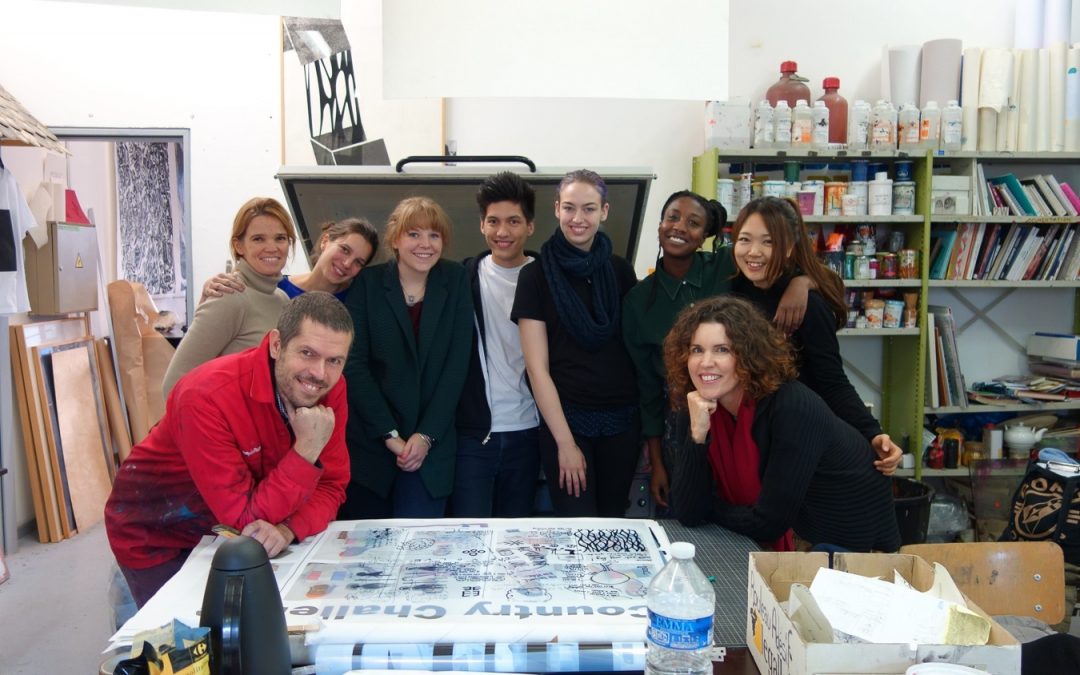
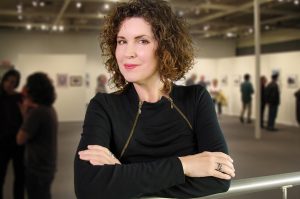
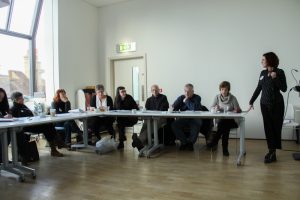
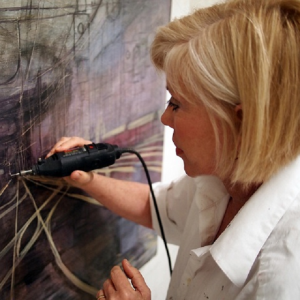
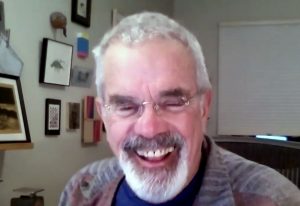
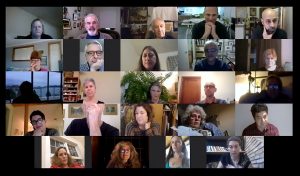

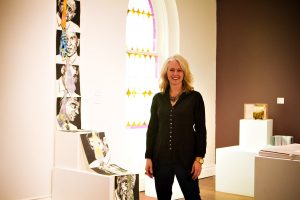
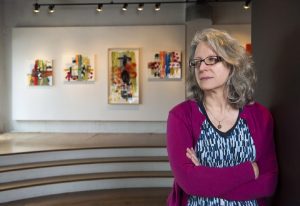
Thanks as always for a wonderful article Ann. I’m especially grateful to share my experience with other artists. The business part can be so challenging!
Thank you for sharing your coaching experience Mary!
Thanks for this helpful article Ann! I appreciate seeing different coaches’ styles and offerings fleshed out.
Working with Paul Klein was one of the best things I’ve ever done for myself. He kicked me in the butt, helped me to realize some truths about functioning in the art world that I never picked up in art school, and focused me on generosity and vulnerability.